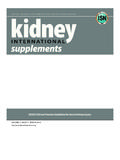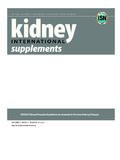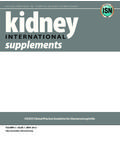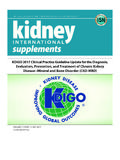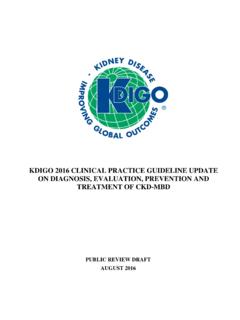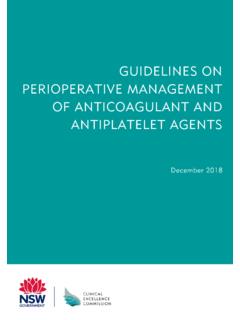Transcription of Iron management in chronic kidney disease: conclusions ...
1 OPENIron management in chronic kidney disease: conclusions from a kidney Disease: ImprovingGlobal Outcomes (KDIGO) ControversiesConferenceIain C. Macdougall1, Andreas J. Bircher2, Kai-Uwe Eckardt3, Gregorio T. Obrador4, Carol A. Pollock5,6,Peter Stenvinkel7, Dorine W. Swinkels8, Christoph Wanner9,Gu nter Weiss10, and Glenn M. Chertow11; forConference Participants121 Department of Renal Medicine, King s College Hospital, London, UK;2 Allergy Unit, Dermatology Clinic, University Hospital Basel, Basel,Switzerland;3 Department of Nephrology and Hypertension, Friedrich-Alexander-Universit t Erlangen-N rnberg, Erlangen, Germany;4 Universidad Panamericana School of Medicine, Mexico City, Mexico;5 University of Sydney, Sydney, Australia;6 Royal North ShoreHospital, Sydney, Australia;7 Division of Renal Medicine, Department of Clinical Science, Intervention and Technology, KarolinskaUniversity Hospital, Stockholm, Sweden.
2 8 Department of Laboratory Medicine, Translational Metabolic Laboratory, Radboud UniversityMedical Center, Nijmegen, the Netherlands;9 Renal Division, University Hospital of W rzburg, W rzburg, Germany;10 Department ofInternal Medicine VI, Infectious Disease, Immunology, Rheumatology, Pneumology, Medical University of Innsbruck, Innsbruck, Austria;and11 Division of Nephrology, Stanford University School of Medicine, Palo Alto, California, USAB efore the introduction of erythropoiesis-stimulatingagents (ESAs) in 1989, repeated transfusions given topatients with end-stage renal disease caused iron overload,and the need for supplemental iron was rare. However,with the widespread introduction of ESAs, it wasrecognized that supplemental iron was necessary tooptimize hemoglobin response and allow reduction ofthe ESA dose for economic reasons and recent concernsabout ESA safety.
3 Iron supplementation was also found tobe more efficacious via intravenous compared to oraladministration, and the use of intravenous iron hasescalated in recent years. The safety of various ironcompounds has been of theoretical concern due to theirpotential to induce iron overload, oxidative stress,hypersensitivity reactions, and a permissive environmentfor infectious processes. Therefore, an expert group wasconvened to assess the benefits and risks of parenteral iron,and to provide strategies for its optimal use while mitigatingthe risk for acute reactions and other adverse International(2016)89,28 39; : chronic kidney disease; hypersensitivity; infections; iron;overload; oxidative stress 2016 International Society of Nephrology.
4 This is an open access articleunder the CC BY-NC-ND license ( ).Iron is a vital element for numerous bodily functions, mostnotably as an ingredient of hemoglobin (Hb). Most healthypeople can achieve a stable iron balance, managing toingest the required amount of iron in the diet to compensatefor the small amount of daily iron losses from the , many patients with advanced chronic kidney dis-ease (CKD) are in negative iron balance as a result of reduceddietary intake, impaired absorption from the gut, andincreased iron losses. This is particularly true in hemodialysis(HD) patients, for whom supplemental iron is often essentialto keep pace with blood loss and the requirements iron is a highly effective means of replacingiron deficits and can enhance erythropoiesis, allowing lowerrequirements for ESA therapy.
5 This is particularly importantsince the realization that ESA therapy may result in anumber of adverse clinical outcomes, most notably stroke,venous thromboembolic disease, and vascular accessthrombosis. However, aside from changes in laboratoryparameters, the evidence base evaluating outcomes related tothe use of iron is sparse, and the effect of iron on hardclinical outcomes including death and major health eventsis uncertain. Moreover, there is evidence from laboratory,animal, and observational studies that iron may exacer-bate oxidative stress, potentiate atherogenesis and cardio-vascular (CV) toxicity, and increase the propensity forinfections, as well as occasionally induce conference was convened to critically examine theevidence base and to identify gaps in knowledge so as toinform future clinical research.
6 The four main themes dis-cussed were: iron overload, oxidative stress, infections, andhypersensitivity :Iain C. Macdougall, Department of Renal Medicine, King sCollege Hospital, Denmark Hill, London SE5 9RS, UK. list of other conference 28 August 2015; revised 22 September 2015; accepted 29 September 2015meeting International(2016)89,28 39 ACHIEVING THE RIGHT BALANCE: IRON DEFICIENCY VERSUSIRON OVERLOADC auses, definition, and diagnosis of iron deficiencyPatients with CKD are prone to iron deficiency, and itsetiology is multifactorial. The definition of iron deficiency canbe considered under 2 main categories:absolute, when there isadeficiency of total body iron stores (Table 1); andfunctional,when there are ample or increased total body iron stores, butwith sequestration of iron in the reticuloendothelial system(RES), with inadequate iron supply for respect to functional iron deficiency, sequestrationof iron within the RES is primarily due to transferrin is a negative acute phase protein, serumtransferrin tends to be reduced in CKD aresult, total iron binding capacity is decreased.
7 At a giventransferrin saturation, the absolute amount of iron bound totransferrin in the circulation and available for erythropoiesisis lower in CKD patients than in healthy people withnormal or near-normal kidney function. Stimulation oferythropoiesis with ESAs creates an increased demand foriron and can unmask and/or aggravate decreased loss is largely due to blood loss. The relation betweenblood loss and iron loss depends on the Hb level ( , Hb12 g/dl: mg iron per ml blood; Hb 10 g/dl: mg ironper ml blood). In non-dialysis CKD patients, the averagegastrointestinal blood loss can be elevated (estimated bloodloss of ml/d, approximately L/yr, corresponding toabout g iron/yr) as compared to that of healthy people( ml/d, corresponding to about g iron/yr).
8 2In HDpatients, some evidence indicates an even larger increase ofgastrointestinal blood loss (mean ml/d).3 Procedure- andlaboratory test related blood loss of patients on HD is of theorder of 2 5 l/yr,4but may vary considerably over time andamong patients; blood loss is also influenced, for example, byanticoagulant and antiplatelet agent 7 Inaggregate, iron losses in HD patients are considered to be ofthe order of 1 2 g/yr, but may be highly variable, and in somepatients may be as high as 4 5 ferritin and transferrin saturation have their short-comings in assessing iron status and guiding iron therapy inpatients with 11 The diagnosis of absolute irondeficiency is usually based on low serum ferritin concentra-tions (<20 30mg/l) that reflect low body iron stores.
9 In CKDpatients, because of the presence of inflammation, thresholdvalues indicating iron deficiency are generally considered tobe higher than in those without kidney disease. Serum ferritinlevels of 100 or 200mg/l are frequently cited as a cutoff valuein non-dialysis CKD and dialysis patients, the evidence is rather limited, it is generally feltthat a transferrin saturation<20% is indicative of absoluteiron deficiency, although transferrin saturations above this donot exclude this when iron stores and circulating iron are sufficient,iron supply for erythropoiesis can be inadequate, as in in-stances during intense stimulation of erythropoiesis withESAs, or under conditions of blocked iron release frommacrophages by of hypochromic red cells and reticulocyte Hbcontent have been utilized as indicators of inadequate ironsupply,11.
10 13but problems of analyzer availability and the needfor the analysis to be performed soon after blood samplingpreclude their widespread adoption into routine serum hepcidin has been proposed as a meansof identifying patients who might benefit from increasingeither ESA or iron dosing,14but to date, such an approachhas not been shown to be clinically ,15 17 Furthermore,hepcidin assays are not harmonized or 20 Doses of iron required to correct iron deficiencySince the true amount of iron loss in individual patients andpatient groups is uncertain, the precise doses required tocompensate for this loss inevitably remain doses of iron in excess of ongoing losses willresult in positive iron balance, the consequences of which general, iron doses in excess of 3 g/yr are likely to beassociated with an increased risk of exceeding the ongoingiron loss and inducing positive iron balance.
